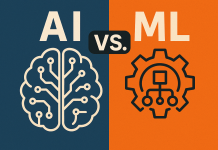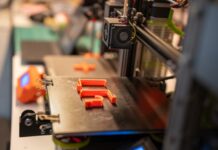Introduction
Within the Realm of Scientific Technology, the Convergence of Nanotechnology and Regenerative Medicinal Drug Has Sparked a Revolution That Holds Titanic Promise for the Destiny of Healthcare. Nanotechnology, the Manipulation of Rely at the Nanoscale (Normally at the Order of 1 to a Hundred Nanometers), Has Enabled Scientists and Researchers to Delve into the Complex International of Cells, Tissues, and Molecules. When Blended with the Standards of Regenerative Medicinal Drug, Which Aims to Repair and Rejuvenate Damaged Tissues and Organs, This Fusion Opens Up a Realm of Opportunities That Had Been as Soon as Deemed Science Fiction. In this Newsletter, We Discover the Burgeoning Area of Nanotechnology in Regenerative Medication, Its Packages, Challenges, and the Transformative Capacity It Holds for the Future.
Understanding Nanotechnology in Regenerative Medicine
Imagine Being Capable of Painting on Constructing Blocks So Small That They May Be Almost One Hundred,000 Instances Thinner Than a Human Hair. This Is the Sector of Nanotechnology, Wherein Scientists Are Gaining Knowledge of the Artwork of Manipulating Be Counted on the Tiniest Scale – the Nanoscale. Within the Realm of Drugs, This Minuscule Technology Is Teaming Up with the Groundbreaking Ideas of Regenerative Medication, and the Effects Are Nothing Quick or Extraordinary.
a New Level of Precision
Nanotechnology Has Proficient Us with a Splendid Degree of Precision That Changed into Once Limited to the Pages of Technological Know-How Fiction. Reflect on Consideration on It: We Are Now Capable of Tinkering with Materials and Cells to a Molecular Degree. This Newfound Strength Is Surprisingly Good Sized Within the Subject of Regenerative Medicinal Drugs. Why? Because Regenerative Remedy Revolves Around the Idea of Restoring and Rejuvenating Damaged Tissues and Organs. and to Do This, You Need to Have an Actual Knack for Manipulating Those Building Blocks of Life.
Tiny Tools, Big Impact
Enter Nanomaterials – the Superheroes of the Nanotechnology World. We’re Speaking About Nanoparticles, Nanofibers, and Nanogels. These Materials Are So Small That You Cannot Even See Them with an Everyday Microscope. However, Their Size Is Not the Best Issue That Units Them Apart. They’ve Got a Few Simply Specific Residences Way to Their Length and the Manner in Their Surfaces Are Constructed.
These Special Properties Make Nanomaterials Incredibly Versatile. They Can Be Used to Transport Therapeutic Agents Right to Where They’re Needed Most. They Can Also Mimic the Environment That Our Cells Call Home, Helping Us Understand How Cells Behave and Interact. And, Hold on to Your Hats, They Can Even Nudge Cells to Do Things – Yes, You Read That Right – Nanomaterials Can Actually Influence How Cells Behave.
Packages of Nanotechnology in Regenerative Medication
Nanotechnology Has Seamlessly Incorporated into the World of Regenerative Medicinal Drugs, Providing a Treasure Trove of Groundbreaking Programs That Promise to Redefine Healthcare as We Know It. This Fusion Has Paved the Way for Innovative Solutions That Were Once Considered Unimaginable. Let’s Delve into Some Remarkable Applications Where Nanotechnology Is Shining Brightly:
- Revolutionising Drug Delivery Systems
The traditional Technique of Drug Delivery Frequently Entails a “One-Length-Suits-All” Method, Which May Result in Unintended Aspect Consequences and Constrained Efficacy. Input Nanotechnology, Which Has Turned This Paradigm on Its Head. Scientists Can Now Engineer Nanoparticles with Precision to Encapsulate Drugs and Transport Them with Laser-Like Accuracy to Specific Cells or Tissues
Imagine a Scenario Where Potent Medications Reach Their Intended Targets Without Affecting Healthy Cells Nearby. Nanoparticles, with Their Minuscule Size, Can Navigate Through the Intricate Labyrinth of the Human Body, Homing in on the Designated Site of Action. This Not Only Maximises the Effectiveness of Treatments but Also Significantly Minimises Adverse Effects That Can Result from Non-Specific Drug Distribution.
- Pioneering Tissue Engineering and Regeneration
Nanotechnology Has Ushered in a New Technology of Tissue Engineering and Regeneration. At the Heart of This Innovation Are Nanoscale Scaffold Materials. These Scaffolds, Often Resembling the Natural Extracellular Matrix, Provide an Ideal Environment for Cells to Adhere, Grow, and Differentiate. The intricacy of These Materials Mimics the Microenvironment That Cells Experience in the Body, Nurturing Their Development and Regeneration.
Envision Constructing a Scaffold So Precisely Tuned That It Guides Cells to Regenerate Damaged Tissues with Exquisite Accuracy. By integrating Growth Factors and Even Stem Cells into These Nanofibrous Scaffolds, Scientists Are Enabling the Reconstruction of Tissues Ravaged by Injury, Disease, or Aging. This Could Hold the Key to Treating Conditions That Have Traditionally Posed Significant Challenges.
- Empowering Stem Cell Manipulation
Stem Cells, with Their Remarkable Ability to Morph into Various Cell Types, Hold Enormous Potential for Regenerative Therapies. However, Coaxing These Cells to Transform as Needed Requires an Intricate Dance of Molecular Cues. Nanotechnology Has Emerged as the Choreographer in This Dance, Providing a Way to Mimic the Natural Cues That Guide Stem Cell Behavior in the Body’s Microenvironment.
Imagine Harnessing Nanomaterials to Steer Stem Cells Toward Specific Destinies – Perhaps Prompting Them to Regenerate Neurons in Spinal Cord Injuries or Combating Neurodegenerative Diseases by Facilitating the Growth of Brain Cells. This Level of Precision Offers a Tantalising Glimpse into a Future Where Previously Irreversible Conditions Might Become Manageable Through the Manipulation of Our Own Cells.
- Early Disease Detection with Diagnostic Nanoprobes
Early Detection Is Often the Linchpin in Successfully Treating Many Diseases. Nanotechnology Has Stepped Up to This Challenge with Diagnostic Nanoprobes – Nanoparticles That Can Be Customised to Recognize and Latch onto Specific Biomolecules Associated with Diseases.
Picture Nanoparticles Armed with an Uncanny Ability to Detect the Tiniest Molecular Hints of a Disease, Allowing for Diagnoses Far Before Symptoms Even Emerge. These Diagnostic Nanoprobes Can Function as an Army of Molecular Detectives, Pinpointing the Earliest Signs of Ailments Like Cancer, Cardiovascular Diseases, and Infections. Their Precision and Sensitivity Offer a Window into a Future Where Proactive Healthcare Takes Center Stage.
In conclusion, the Marriage of Nanotechnology and Regenerative Medicine Has Opened Doors to Applications That Were Once Relegated to the Realm of Science Fiction. From fine-tuning Drug Delivery to Orchestrating the Regeneration of Tissues and Manipulating Stem Cells, the Impact of Nanotechnology Is Transformative. As researchers Continue to Unravel the Potential of This Fusion, the Future of Healthcare Looks Promisingly Smaller – Yet Incredibly Powerful – as We Delve into the Nanoscale Intricacies of Life and Healing.
Challenges and Considerations in Nanotechnology for Regenerative Medicine
The Marriage of Nanotechnology and Regenerative Medicine Is an Awe-Inspiring Union, Presenting the Capacity to Redefine Healthcare Treatments. But, as with All Groundbreaking Endeavours, This Partnership Isn’t Without Its Percentage of Challenges and Intricacies That Demand Careful Consideration. Let’s Dive into the Hurdles That Ought to Be Overcome to Harness the Total Capability of Nanotechnology in Regenerative Medicine:
- Biocompatibility and Safety Worries
Introducing Nanomaterials into the Complex Landscape of the Human Body Comes with a Critical Caveat: Safety. The scale at Which These Materials Operate Is So Small That Their Behaviour Might Differ from Bulk Materials, Potentially Raising Concerns About Their Long-Term Effects and Toxicity. The challenge lies in Ensuring That These Tiny Marvels Are Not Inadvertently Harmful to Our Cells, Tissues, or Overall Health.
Extensive and Meticulous Research Is an Absolute Necessity to Evaluate the Biocompatibility of Nanomaterials. This entails Understanding How the Body Interacts with These Materials, Their Potential to Provoke Immune Responses, and Whether They Could Accumulate Over Time, Causing Unforeseen Consequences. As we Tread into These Uncharted Waters, the Safety of Patients Remains Paramount, Demanding Thorough Scrutiny and Risk Assessment.
- Navigating Regulatory Labyrinth
While Innovation Is the Heartbeat of Scientific Progress, Regulatory Approval Processes Often Move at a Different Pace. Nanotechnology in Regenerative Medicine Brings Novel Approaches That Challenge Existing Regulatory Frameworks. Striking a Delicate Balance Between Embracing Innovation and Ensuring Patient Safety Becomes an Intricate Dance That Policymakers, Researchers, and Regulators Must Perform.
The Unique Nature of Nanotechnology-Based Therapies Demands a Tailored Approach to Regulatory Oversight. These Therapies Are Not Just New Treatments; They’re a Bridge to a New Paradigm of Healing. Navigating This Uncharted Territory Requires Collaboration Between Scientists, Clinicians, and Regulatory Bodies to Establish Guidelines That Foster Innovation While Safeguarding Patients.
- The Art of Manufacturing Consistency
In the Realm of Nanotechnology, Precision Is Paramount. Creating Nanomaterials with Specific Properties and Characteristics Is a Feat of Engineering Finesse. However, Translating These Laboratory Wonders into Reliable, Scalable, and Consistent Clinical Applications Is a Challenge of an Entirely Different Dimension.
Making Sure That Nanomaterials Can Be Manufactured Consistently and Reproducibly Is Essential for Reliable Consequences in Regenerative Medicine. Variability in Manufacturing Approaches Can Lead to Unpredictable Results, Hampering the Efficacy of Remedies. Researchers and Engineers Are Tasked with Satisfactory-Tuning Production Techniques, from Nanoparticle Synthesis to Scaffold Fabrication, to Make Certain That the Magic We See Within the Lab Translates Seamlessly to the Health Facility.
As we Embark on This Captivating Adventure on the Intersection of Nanotechnology and Regenerative Medication, We Should Be Acutely Aware of the Challenges That Stand Earlier Than Us. The promise of Modern Remedies Is Tantalising, but It Is Vital to Navigate the Pitfalls with a Steady Hand and an Unyielding Commitment to Protection and Satisfaction.
Addressing Concerns of Biocompatibility and Safety, Shaping Adaptive Regulatory Frameworks, and Mastering the Art of Manufacturing Consistency Will Determine the Success of Nanotechnology-Driven Advancements in Regenerative Medicine. As Researchers, Clinicians, and Policymakers Continue to Collaborate, These Challenges Will Transform into Milestones That Mark Our Progress Toward a Future Where Healing Happens on the Smallest of Scales, Bringing Monumental Benefits to the World of Healthcare.
Future Perspectives: Nanotechnology and Regenerative Medicine
As the Intricate Dance of Nanotechnology and Regenerative Medicine Continues to Unfold, the Horizon Gleams with Boundless Possibilities That Have the Potential to Reshape the Landscape of Healthcare. The Fusion of These Two Groundbreaking Fields Ignites a Beacon of Hope, Casting Light on Transformative Avenues That Were Once Confined to the Realm of Imagination. Let’s Cast Our Gaze Toward the Future and Explore the Exciting Vistas That Await:
- Personalised Medicine: Precision Beyond Measure
In the Era of Nanotechnology and Regenerative Medicine, the Concept of Healthcare Is Evolving into an Unprecedented Realm of Personalization. Imagine Treatments That Aren’t Just Designed for Broad Strokes, but Rather, Tailored at the Molecular Level to Match the Unique Characteristics of Each Individual. Nanotechnology Equips Us with the Tools to Dissect the Intricate Details of Disease Progression and Patient Responses, Allowing for Treatments That Are as Unique as Our Fingerprints.
By delving into the Very Essence of an Individual’s Molecular Makeup, Nanotechnology Enables Therapies That Adjust to Variations in Disease Profiles and Genetic Predispositions. This Approach Has the Potential to Unlock New Dimensions in Patient Care, Optimising Outcomes and Minimising Adverse Effects by Catering Precisely to Each Patient’s Needs.
- Revolutionising Organ Transplantation: Growing Hope in Labs
The shortage of Donor Organs Has Long Been a Challenge in the Field of Transplantation, Leaving Countless Patients Languishing on Waiting Lists. Input Nanotechnology-Guided Tissue Engineering – a Sport-Converting Method That Could Bring in a Brand New Technology in Organ Transplantation. Imagine Being Able to Grow Replacement Organs in the Lab, Tailor-Made for Each Patient’s Unique Physiology.
Through Nanotechnology, Scientists Are Crafting Scaffolds at the Nanoscale, Guiding the Growth of Tissues with Unparalleled Precision. This Means That the Dream of Customised Organs, Created in a Laboratory Setting, Might Become a Reality. The implications Are Profound – Waiting Lists Could Shrink, Lives Could Be Saved, and the Concept of Organ Rejection Might Be Minimised as These Engineered Organs Become Harmoniously Integrated into Patients’ Bodies.
- Synergistic Combination Therapies: Amplifying Healing Power
Nanotechnology Isn’t Limited to Stand-Alone Solutions; It’s Also a Masterful Collaborator. The Integration of Nanotechnology with Other Cutting-Edge Treatment Modalities Like Gene Therapy or Immunotherapy Opens Doors to Synergistic Therapies That Amplify Their Healing Potential. Picture a Treatment Regimen That Combines the Precision of Nanotechnology-Delivered Drugs with the Targeted Power of Gene Therapy.
In this Destiny State of Affairs, Nanotechnology Acts as an Enabler, Enhancing the Delivery and Efficacy of Therapeutic Sellers. This Multidimensional Approach May Cause Groundbreaking Breakthroughs in Treating Complicated Illnesses That Have Defied Conventional Treatments.
The Symphony of Nanotechnology and Regenerative Medicine Is Composing a Future That Blurs the Lines Between Science Fiction and Reality. The Potential to Tailor Treatments at the Molecular Level, Grow Replacement Organs in Laboratories, and Forge Partnerships Between Nanotechnology and Other Therapies Paints a Vivid Picture of a Healthcare Landscape That Is Not Only Advanced but Deeply Human-Centred.
As we Stand at the Precipice of These Transformative Possibilities, It’s Crucial to Keep the Spirit of Exploration Alive, While Also Embracing the Responsibility to Navigate Ethical, Regulatory, and Safety Considerations. The Future Beckons, Promising an Era Where Healing Becomes Not Only More Effective but Also More Finely Attuned to the Unique Needs of Every Individual. With the Fusion of Nanotechnology and Regenerative Medicine as Our Guide, the Future of Healthcare Shines Brilliantly Ahead.
Conclusion
The Marriage of Nanotechnology and Regenerative Medicine Brings Forth a New Era in Healthcare, Where Healing and Restoration Occur at the Tiniest Scales. The ability to Manipulate Materials and Cells at the Molecular Level Offers Solutions to Challenges That Have Long Eluded Medical Science. As Research Advances and Challenges Are Overcome, the Transformative Potential of This Field Could Reshape Medical Treatments, Enhance Patient Outcomes, and Redefine Our Approach to Some of the Most Pressing Health Issues of Our Time.








